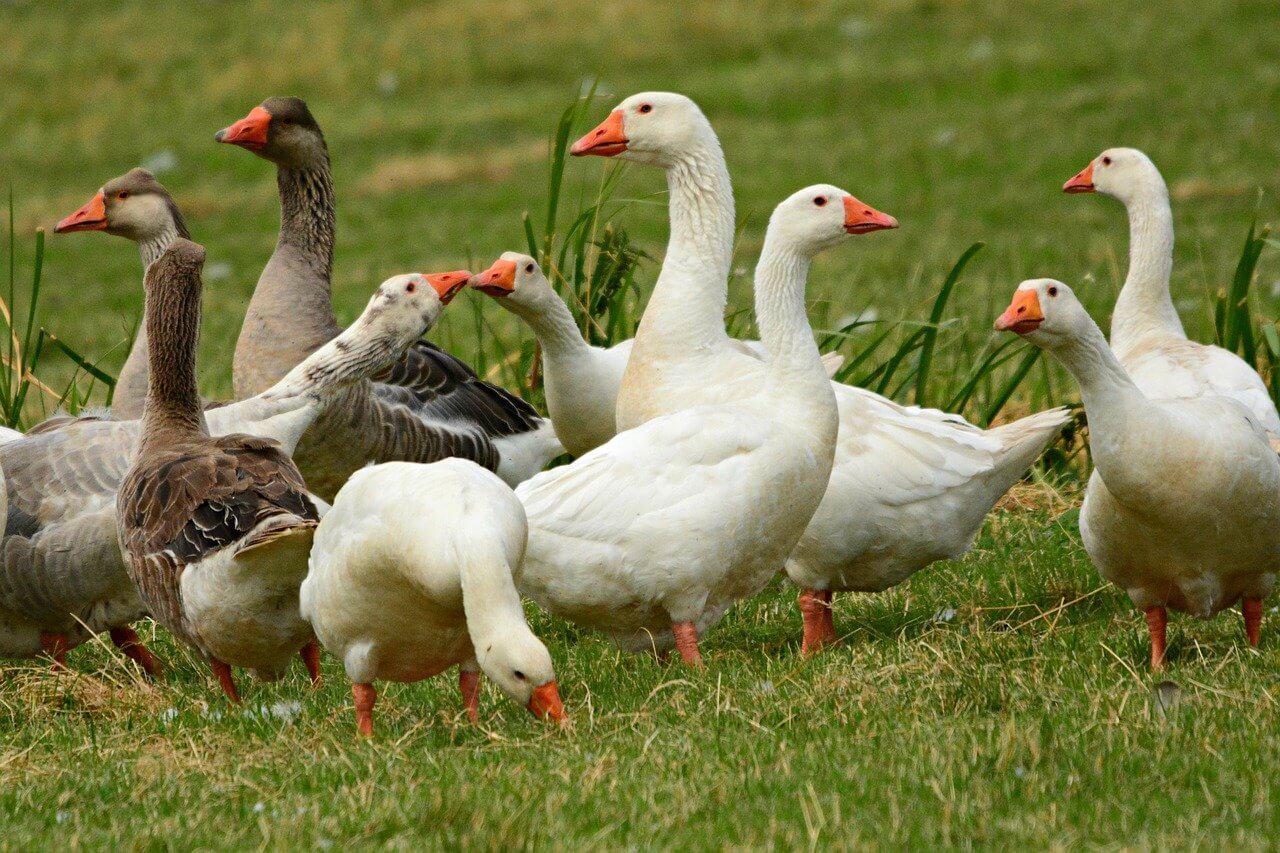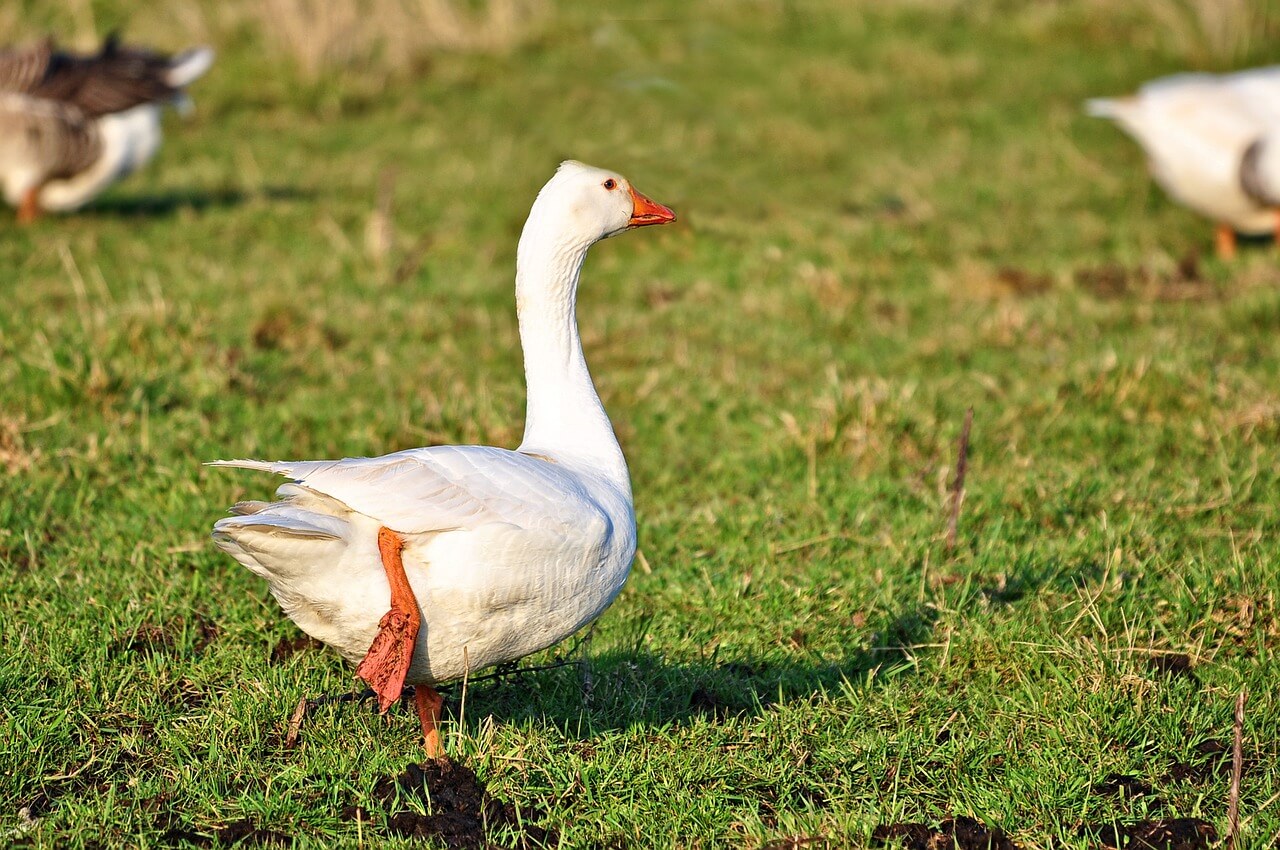If you’re wondering how to clip goose wings, it can be tough to find reliable information on how to do so safely, effectively, and expediently. Fortunately, this post has all the information you need in order to do so with ease.
What You'll Learn Today
Can You Cut Geese Wings?

If you’ve ever raised any other type of domesticated poultry, you might already be familiar with the process of clipping wings.
Wing clipping is done to render a bird unable to fly. Although this sounds cruel and harmful, the reality is that it doesn’t hurt the bird when done correctly and can actually protect it from harm.
If a goose is allowed to escape its enclosure, there’s a good chance that it not only will wreak havoc by getting into your flower beds – but also that havoc can be wrought upon it by some opportunistic predator.
Therefore, wing clipping is a good solution to keep your geese from flying away.
This is a practice that can be done to all species of birds. As long as only the flight feathers are trimmed, and only on one side, it is safe and effective.
Do You Need to Clip the Wings of Geese?
It depends – while some geese are great at flying, others prefer to stay close to the ground.
Flight is a characteristic that has been bred out of many breeds of domestic geese. They don’t want to fly and don’t need to fly, since their food – grass – is right there on the ground.
However, when startled, and with a good tailwind, geese can get off the ground several feet and can remain airborne for up to a quarter of a mile (sometimes more, if they’re traveling downhill).
Unlike other species of farmed poultry, geese have not been bred so extensively that they’ve totally lost their wild flight capabilities. If you don’t have a super tall fence or another sort of barrier around your geese, there is a chance that they could take off.
This can be frustrating, especially when you consider how difficult it is to get them back!
Clipping wings doesn’t necessarily hurt geese, at least not when it’s done in the correct way. However, it does create yet another yearly chore you will need to attend to – so most geese farmers consider wing clipping an optional task.
Wing clipping is a good idea for most people who raise geese. There is one exception. If you raise geese for exhibition, you will want to check breed standards and bylaws. In many cases, wing trimming will render your goose ineligible for a competition.
How Do You Clip Wings?

Clipping geese wings is quite simple. There are a few basic tips and pointers to keep in mind.
- For starters, you should only clip one wing. If you clip both wings, your efforts will be futile. The idea of clipping just a single wing is to throw the goose off balance when it tries to fly. Trim primary and secondary flight feathers.
- If you’re concerned about appearances, you should try to leave three or four large flight feathers. These are the long ones at the tip of the wing. If you leave these, the wing will look more normal when the goose folds it against its body.
- Always clip within an inch or two of the skin to avoid injuring the goose. Use a pair of sharp, heavy scissors or tin snips to make sure you can cut through the thick feathers. They can be quite tough!
Clipping Geese Wings: Step by Step
Here’s a quick step-by-step guide to help you clip the wings of your goose in a quick, painless way.
1. Catch the Goose
This is by far the hardest part of clipping wings! Some geese are docile and don’t mind being handled, but most will fear humans and run away. If you can, corner the goose in a small area.
You can also use a towel and throw it over the animal. This should slow it down long enough for you to grab it.
Once you have it, apply a bit of gentle pressure to its wings and pick it up. Give it (and yourself) a few minutes to calm down. Invert the bird.
2. Expose the Wing
With the goose upside down, identify the wing you want to clip. It doesn’t matter whether you work on the left or right side, but again – you are only going to do one side.
Expose the primary flight feathers – these are usually distinguished from the rest in a myriad of ways. They might be a different color or length. They are usually the ones closest to the tip, too.
3. Cut the Feathers
With a pair of scissors, trim about two-thirds of the length from the first few flight feathers on the wing of the goose. Cut a significant amount of feathers but don’t cut so close to the wing that you make the goose bleed.
Geese have veins that extend into the feathers about one inch or so. If you cut below this point, the goose won’t feel anything since it’s just dead matter – it’s like cutting your own fingernails. Cut deeper, and the goose can bleed or get an infection – and you will definitely be hurting your goose.
4. Release the Goose
Once the feathers have been trimmed, go ahead and release the goose. It might be a bit confused and disoriented at first, but it should wander off just fine!
5. Consider This Helpful Resource
Still not sure how to go about the process of clipping geese wings? Check out this video. It has some helpful information and a tutorial that could prove to be helpful to you as you get started with this chore.
How Often Should I Clip Goose Wings?
Geese and ducks alike go through many sets of feathers as they mature. Therefore, you should wait until your goose is at least 17 weeks old until you clip any feathers.
If you do it before then, you will likely find yourself repeating the process later on. Your goose won’t have its final set of feathers until it’s around 17 weeks old.
After that point, wing trimming needs to be done on an annual basis. Most geese molt and then grow a new set of feathers in either the fall or summer (they aren’t quite as predictable as chickens, who molt only in the fall).
As your geese are molting, keep a close eye on them. Don’t let them develop a full set of feathers, enabling them to fly again, before you have time to clip the wings!
Is it Cruel to Clip Wings?
That depends on who you asked. Many animal rights organizations will argue that wing clipping is cruel and harmful, but the reality is that, when done correctly, it is no more harmful and traumatic than trimming your own fingernails.
Wing clipping can be detrimental on birds that are more likely to try to take flight often, like pet bird species (ie, parrots and canaries). With heavy farm poultry like geese and chickens, they aren’t going to try to take flight – and potentially injure themselves – even after their wings have been clipped.
Again, as long as you do it safely and properly, wing clipping is not only not harmful, but it can also help keep your geese safe from predators by forcing them to stay contained within a fence.
It might not be for everyone, but fortunately, if you decide that it’s the right choice for your farm, it’s relatively easy to do. If you’re looking for more information on geese, here is our step-by-step guide on how to butcher a goose.